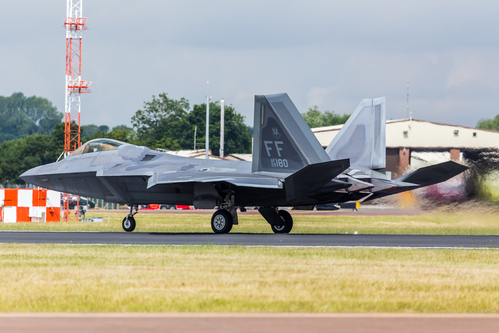
Begun in the early 1980s as a replacement for the F-15C Eagle, the Advanced Tactical Fighter project resulted in the creation of the F-22 Raptor.

Initially, the U.S. Air Force intended to have a fleet of 750 Raptors. However, the end of the Cold War and the dissolution of the Soviet Union, which was America’s primary air adversary, changed strategic priorities.

The need for such a superior air dominance platform began to wane as the United States engaged in the immediate combat demands of the wars in Iraq and Afghanistan.

Moreover, the protracted development of the F-22, which spanned over two decades from inception to initial operating capability in 2005.

During this period, the Soviet threat had dissipated, and the F-22’s peer adversaries had not yet emerged on the global stage.

The high costs associated with the Raptor—pegged at $35 million per plane—became increasingly difficult to justify, especially with the economic downturn that began in 2008 and the subsequent recession.

The competition for funding with immediate battlefield requirements, such as Mine-Resistant Ambush Protected (MRAP) vehicles, further undermined the F-22’s position.

Simultaneously, the Raptor faced indirect competition from the cheaper, multi-role F-35 Joint Strike Fighter, which offered overlapping capabilities and appeared more aligned with the Pentagon’s evolving focus on versatile combat platforms.

Defense Secretary Robert Gates’ 2009 recommendation to terminate the F-22 production line was influenced by both the economic crisis and the absence of a pressing threat that required the Raptor’s advanced air superiority.

As the U.S. dealt with the worst economic downturn since the Great Depression and military budget constraints, the decision was also based on projections of an extensive F-35 fleet that could fulfill future air power requirements at a more sustainable cost.

In retrospect, the termination of the F-22 program has prompted discussions about whether America’s air superiority has been compromised.

VIRGINIA BEACH, Va. (Sept. 21, 2008) An F-22 Raptor shows the crowd how it remains stealthy while carrying weapons in flight by cycling it’s weapons bay doors during the 50th Anniversary Naval Air Station Oceana Air Show. The three-day event marked 50 years of air shows at NAS Oceana and included performances by the Navy’s flight demonstration team the Blue Angels and the Navy’s parachute jump team, the Leap Frogs, as well as a variety of aerial demonstrations and static displays of military and civilian aircraft. U.S. Navy photo by Mass Communication Specialist 1st Class Edward I. Fagg/Released)
With China and Russia enhancing their air forces with fifth-generation aircraft such as the J-20, FC-31, and the T-50, the absence of a larger F-22 fleet poses a strategic question: Did the U.S. forsake long-term deterrence for immediate cost savings?

The F-22 program was indeed a casualty of its time—a period marked by shifting global dynamics and economic pressures. But the aircraft’s legacy endures in the lessons it provides about the interplay between technological advancement, economic prudence, and strategic foresight.

As defense strategists look to the future, understanding the F-22’s journey from apex predator to extinct marvel offers valuable insights.

It reinforces the importance of aligning military procurements with both current and future security landscapes—a challenge that continues to define the delicate balance between capability and cost in an ever-evolving world of national defense.
Relevant articles:
– Here’s Why the F-22 Raptor Went Extinct, The National Interest, Nov 18, 2021
– Out of Time: Do Not Revive the F-22, War on the Rocks, May 4, 2016
– The F-22 Out Front, Air & Space Forces Magazine
– 22 production? Could Lockheed Martin Restart the production line?, Defence Aviation

